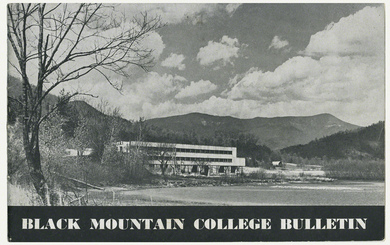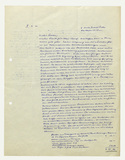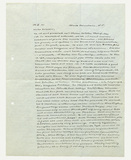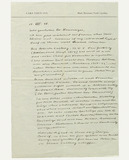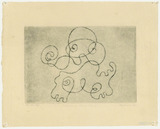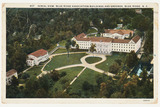Black Mountain College
Wir sind 10 Studenten und 20 Lehrer. Trotzdem wird feste gearbeitet, geistig u[nd] körperlich. Und das macht es neben dem wunderbaren Klima und der besonders sympatischen [!] Atmosphäre so exiting [!].
[There are 10 students and 20 teachers here. We work hard, though, both mentally a[nd] physically. And that, along with the wonderful climate and the very amiable [!] atmosphere, is what makes it so exiting [!]. (ed. trans.)]
Josef Albers to Gertrude Maud Grote on his work at the Black Mountain College, 14 October 1941
In 1933 John Rice founded a college for aspiring artists near Asheville in North Carolina. It took its name from the Black Mountains nearby. The education differed significantly from that of conventional academies. The Black Mountain College aimed to guide young people in finding their own individual path to the arts. Potential was discovered and promoted through joint working and experimentation. Students and teachers organised both the lessons and their everyday existence independently and democratically.
In the founding year of this exemplary educational facility, the Bauhaus in Germany was forced to close under pressure from the Nazis. In subsequent years, teachers such as Lyonel Feininger, Josef Albers or his wife Anni Albers found a new workplace at Black Mountain College. With the aim of not imposing anything on his students, rather of opening their eyes, the German emigrant Albers embodied the ideal of a Black Mountain teacher. He was also instrumental in obtaining an invitation for Wassily Kandinsky to North Carolina (although he did not accept).
In 1941 the college moved from its rented premises to a new adjacent building - constructed, of course, by the students and teachers themselves. Designs submitted by the German Bauhaus emigrants Walter Gropius and Marcel Breuer could not, however, be used for reasons of cost. The ground-breaking idea of a liberal, self-managing art school in the mountains of North Carolina lasted until 1956. The college was then closed. By then, roughly 1200 individuals had been introduced to art - by a number of German emigrants.
Further reading:
Katz, Vincent (Hrsg.): Black Mountain College. Experiment in Art, Cambridge, Massachusetts: MIT Press 2002.
Horowitz, Frederick A. / Danilowitz, Brenda (Hrsg.): Josef Albers. To open eyes. The Bauhaus, Black Mountain College, and Yale, London: Phaidon 2006.

